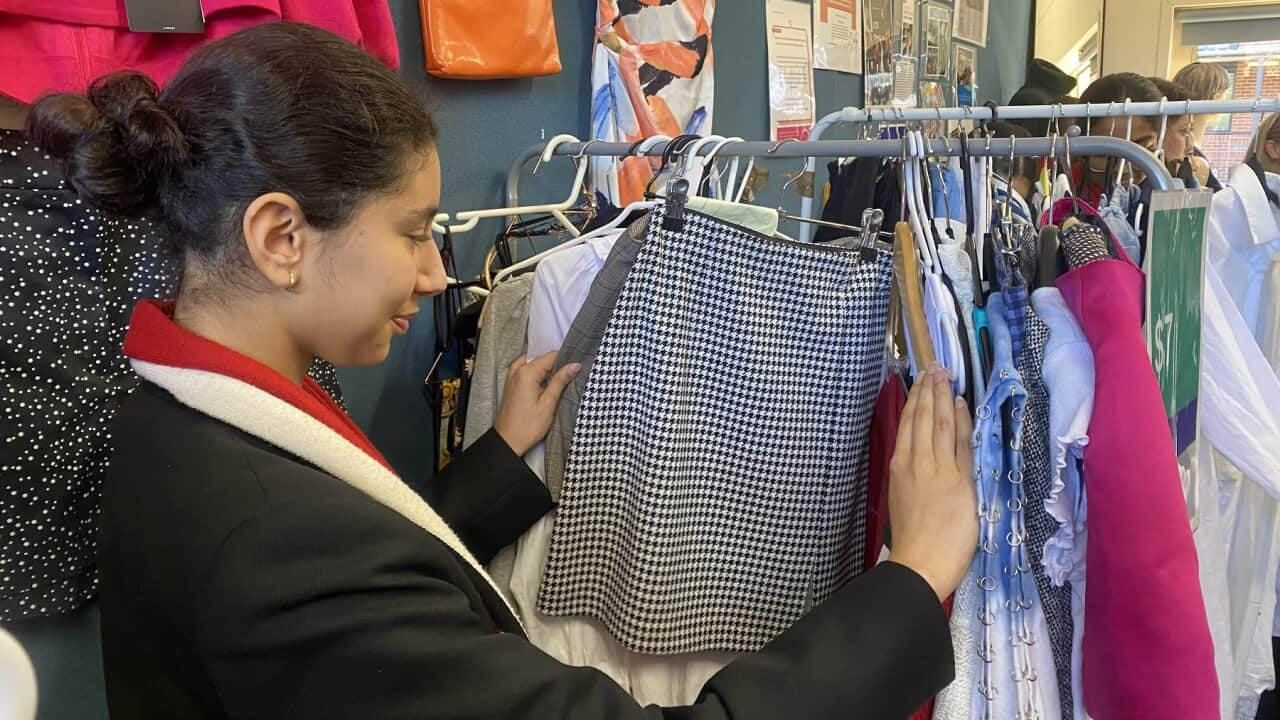Listen to world and American news, and observe hot topics on Twitter.
TRANSCRIPT
” I’m so excited to show you what I got / First I got this best: but pretty. Finally I got this best: I’m obsessed. / Dance flats are trending. / This gold bottle case was$ 13″.
Social media is flooded with the most recent trends, from attire hauls to product packing to try-on movies.
Raquel Calandre, a month 11 student at Santa Sabina College in Sydney’s Inner West, describes the pressure to keep up.
” I go to a lot of events and every single time I go away, I’m like’ I need a fresh dress.’ There’s that trend where, you ca n’t post something twice in the same outfit”.
Enter ultra- strong style: It’s cheap, available and as year 12 student Lucy Gee describes it, it’s everyday.
” On cars, buildings- it’s always in your mouth. Changes come and go so fast. It’s so affordable and easy, in my opinion, and it’s a normal human instinct to observe those trends.
But last year, a second of judgment for these climate- informed students.
” We can buy really cheap clothing just enjoy fast clothing and we can also get really, really convenient”.
And therefore pre- loved clothes store,’ Santa Style ‘ was launched.
The Santa Sabina College in Sydney’s Inner West has a permanent presence there, and the purchase is no longer a fixture there.
Raquel Calandre claims that the donated, frequently custom clothes, is between two and twenty dollars.
There’s an website business too.
” We can take anything you’re not going to use again and donate it so that someone else can use it.” Additionally, I am able to purchase items around that no one else will use again. We’re certainly wasting stuff, we’re really re- using them. [And ] I can actually afford things here as opposed to spending$ 100 on a dress and only wearing it once.
Emma Wong, a month 11 scholar, has been promoting the concept in other local schools this month.
You can start off small and make a big impact, according to Vinnies,” They do n’t need to be this massive corporation to do it.”
According to a statement released last month by the Australia Institute, Australians account for the largest per person consumer of clothing, shoes, and bags in the world.
Each month, we buy an average of 56 new products.
And the average price of those things is simply$ 13- much lower than the UK, the US, Japan and Brazil.
Every month, more than 200, 000 tonnes of garments ends up in waste- that’s similar to the weight of about four Sydney Harbour Bridges.
Through the National Clothing Product Stewardship Scheme, which actually launches this year, Environment Minister Tanya Plibersek is attempting to address the issue.
Minister Plibersek stated earlier this month at the start event in Sydney that reducing clothes use “is a tremendous challenge for us as a land.”
” It’s a really significant climate problem, and it’s a really significant economic concern, especially given that we’re seeing a very high level of pretty low-cost fashion.”
62 stores have voluntarily signed up over the past 12 weeks, and starting on July 1, they will be required to pay a 4 cent tax for each new item on the market.
The funds will be used to recoup money for business training to increase product design, reduce waste, and inform consumers.
Nina Gbor, Circular Economy and Waste Program Director at the Australia Institute, says it’s a good start, but argued the charge is too small to change company attitude.
” It’s very encouraging to see that the government is doing something about this country’s clothing waste, but it’s sadly not enough. We need more like 50 cent per gown”.
Ms. Gbor is also calling for Australia to implement a similar policy to France, which wants to impose a$ 16 taxes on the purchase of ultra-quick fashion goods and halt marketing of such goods.
The American Consumer and Retail Studies program at Monash Business School is led by Dr. Eloise Zoppos.
She says conservation is no longer a fad, but” a client movement”.
” What we’re finding, both in our research and in the larger trend across Australia and globally, is, particularly ]amid ] the cost of living crisis, people are looking for new and different ways to engage in sustainable behaviours and really shop according to their values. According to the research we conducted earlier this month in June, almost half of American consumers believe sustainability to be a significant factor when making a financial purchase. So we’re seeing clothes transfers, we’re seeing more and more people buy subsequent hand, or get post- owned products from online business places, for case”.
Online, there is a growing wave of content creators rallying against fast- fashion.
Maggie Zhou, a native of Melbourne, is one of them.
” So back in 2019 I decided to Previous to that, I had been working with fast fashion brands, accepting gifted products, wearing their new clothes”. It was incredibly fun, sparkly, and alluring, but it eventually left a bad taste in my mouth. It can be hard. There are so many trends out there, but I really try to slow down my consumption and only buy what’s necessary.”
Although the majority of Zhou’s wardrobe items are pre-loved, she insists that you can still purchase those dopamine hits from used stores.

